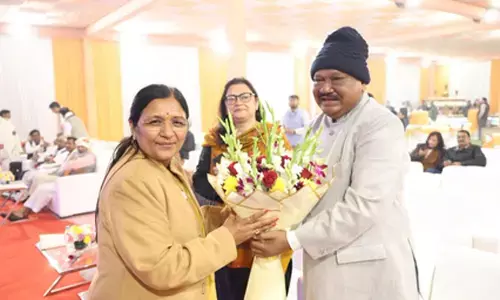The Evolving Landscape of Product Design - Opportunities and Growth

The Evolving Landscape of Product Design - Opportunities and Growth
Product design blends creativity and problem-solving for industry impact. From UX to packaging, discover roles, salary ranges, and market potential in India.
In today’s dynamic and competitive marketplace, the field of product design has emerged as a high-paying profession that holds immense potential for those with a passion for creativity, problem-solving, and innovation. Product designers play a pivotal role in shaping the way we interact with everyday objects, from the latest gadgets to household appliances and even vehicles. Beyond aesthetics and functionality, the impact of innovative and well-designed products reaches far and wide, influencing consumer behavior, driving market growth, and shaping the success of businesses.
The next step for the Product Designer involves refining and elaborating on these ideas by producing initial sketches. Once confident in the Product Design concept, the Designer determines suitable materials and resources for the product’s creation. Utilizing computer-aided design software, the Product Designer generates detailed blueprints of the product. Subsequently, prototypes, also referred to as working models or samples, are produced. These prototypes undergo testing to evaluate their usability. Any flaws or faults identified during testing are addressed and refined, leading to the development of a cost-effective and user-friendly product design.
User-centric approach
The user-centric approach lies at the core of successful product design. It emphasizes the importance of understanding and empathizing with the needs, desires, and behaviors of the end user throughout the design process. Rather than solely focusing on technical specifications or market trends, product designers who adopt a user-centric approach prioritize creating products that genuinely resonate with and provide value to the intended users.
Differentiation and competitive advantage
Design-driven differentiation involves creating products that offer distinctive features, aesthetics, and user experiences that set them apart from competing offerings. By focusing on design as a strategic tool, product designers can create unique value propositions that resonate with consumers and address their unmet needs. This differentiation can be achieved through factors such as advanced functionality, intuitive user interfaces, superior materials, and craftsmanship, or even innovative business models. A well-designed product not only stands out visually but also enhances the overall user experience. It goes beyond meeting basic requirements and offers additional benefits, convenience, or delight that competitors may lack. This added value can be a crucial differentiator, attracting customers and fostering brand loyalty.
Sustainability and ethical design
Sustainability and ethical design have become increasingly important considerations in the field of product design. With growing awareness of environmental and social issues, consumers are seeking products that align with their values and have a positive impact on the world. Incorporating sustainability and ethical principles into the design process not only addresses these concerns but also offers unique opportunities for differentiation and market success.
Sustainable design focuses on minimizing the environmental impact of products throughout their lifecycle. Product designers are tasked with creating eco-friendly solutions that reduce resource consumption, minimize waste generation, and promote the use of renewable materials. This involves considering factors such as energy efficiency, recyclability, and the incorporation of sustainable manufacturing processes.
Cross-disciplinary collaboration
Cross-disciplinary collaboration is a fundamental aspect of successful product design. It involves bringing together professionals from various fields, such as design, engineering, marketing, manufacturing, and even psychology, to collectively contribute their expertise and perspectives to the design process. This collaborative approach not only enriches the overall design outcome but also enhances the product’s market appeal, functionality, and user experience. Each discipline brings its unique insights, methodologies, and problem-solving approaches to the table. By collaborating and sharing ideas, designers can tap into this collective intelligence, enabling them to tackle complex challenges, identify innovative solutions, and create products that are both technically feasible and meet user needs effectively.
Sub opportunities
Product design encompasses various sub-opportunities that professionals can explore within the field.
Industrial Design: Industrial designers focus on the aesthetic and functional aspects of products. They create visually appealing designs while considering factors such as usability, ergonomics, and manufacturing processes.
User Experience (UX) Design: UX designers specialize in designing the overall experience that users have with a product or service. They focus on understanding user behavior, conducting user research, creating wireframes and prototypes, and optimizing the product’s usability and accessibility.
User Interface (UI) Design: UI designers concentrate on designing the visual elements and interactive interfaces of digital products, such as websites, mobile applications, and software. They aim to create intuitive and visually engaging interfaces that enhance user interaction and satisfaction.
Packaging Design: Packaging designers create visual identity and functional packaging solutions for products. They consider aspects such as branding, product protection, ease of use, and sustainability while designing packaging that communicates the product’s value to consumers.
Job scopes and salary range
The field of product design offers diverse job scopes and attractive salary ranges. Industrial designers, UX designers, packaging designers, and visual designers are in high demand across various industries such as technology, consumer goods, automotive, and healthcare. Salaries can vary depending on experience, location, and industry sector.
When it comes to product design salaries in India, they can vary depending on factors such as experience, location, and the employing company. On average, entry-level product designers can expect to earn between INR 4-8 lakhs per annum. With experience and expertise, senior product designers can command salaries ranging from INR 10-20 lakhs per annum or more. These figures, however, are indicative and can differ based on individual negotiation and the specific industry sector.
In terms of company scope, India boasts a diverse range of organizations that prioritize product design. Tech giants like Tata Consultancy Services (TCS), Infosys, and Wipro have established design divisions to cater to client requirements. E-commerce giants like Flipkart and Amazon have also recognized the importance of product design and invested in creating user-centric experiences.
In conclusion, the product design job market in India is witnessing growth and offers competitive salaries. The presence of diverse companies, ranging from multinational corporations to startups, provides ample scope for professionals to explore their creativity and contribute to impactful design solutions. As the country continues to embrace design-driven strategies, product designers in India have a promising future ahead, with opportunities to shape industries, and create user-centric.
(The author is Academic Director of Academy of Fashion & Art (AFA)
















